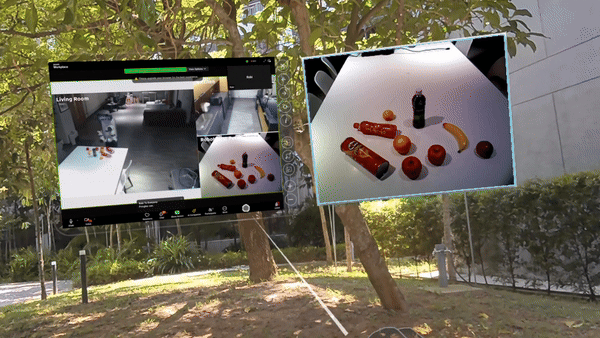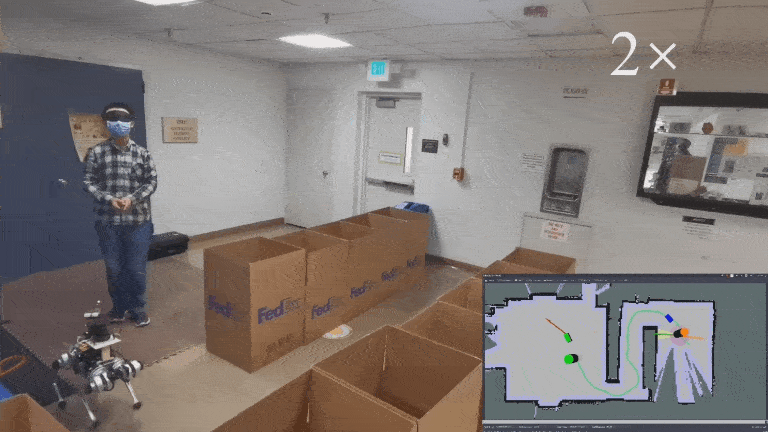
Anxing Xiao (肖岸星), Robotics Researcher & Engineer
I am a Ph.D. student in Computer Science at the National University of Singapore, advised by Prof. David Hsu. I also work closely within the Smart Systems Institute to advance human-centered AI research.
My research interests focus on the system design of service robots in human-centered environments, particularly the design of planning frameworks that support adaptive and robust assistive task execution in open-world scenarios. I have had the opportunity to work with Prof. Koushil Sreenath at UC Berkeley and Prof. Max Q.-H. Meng at SUSTech/CUHK.
I love playing basketball 🏀 and table tennis 🏓 in my free time. I am also open to collaborating with people to explore the possibilities of service robots in various fields. If you are interested in join our lab and work with me, check out Join Us.
CV / Email / Google Scholar / Github / Twitter / Personality
- 08/2025: Our recent work on Robot Appliances Operation, Learning Tool Manipulation, and Coupled Hierarchical Diffusion are accepted to CoRL'25.
- 07/2025: The work I mentored on Social Robot Navigation was accepted to RA-L. Congratulations to Shangyi!
- 01/2025: Our work on Multimodal Remote Interaction was accepted to ICRA'25.
HIGHLIGHTS

Robi Butler: Multimodal Remote Interactions with a Household Robot Assistant
IEEE International Conference on Robotics and Automation (ICRA) 2025.
Anxing Xiao, Nuwan Janaka, Tianrun Hu, Anshul Gupta, Kaixin Li, Cunjun Yu, David Hsu
TL;DR: The robot should be able to understand and execute multimodal instructions that combine language and gesture.

Robotic Autonomous Trolley Collection with Progressive Perception and Nonlinear Model Predictive Control
IEEE International Conference on Robotics and Automation (ICRA) 2022.
Anxing Xiao, Hao Luan, Ziqi Zhao, Yue Hong, Jieting Zhao, Jiankun Wang, Max Q-H Meng
TL;DR: A compact mobile robot that can collect unmarked trolleys in dynamic and complex environments.

Robotic Guide Dog: Leading a Human with Leash-Guided Hybrid Physical Interactions
IEEE International Conference on Robotics and Automation (ICRA) 2021.
Anxing Xiao, Wenzhe Tong, Lizhi Yang, Jun Zeng, Zhongyu Li, Koushil Sreenath
ICRA Best Paper Award Finalist for Service Robotics.
TL;DR: The world's first robotic guide dog that can lead visually impaired to safely travel in a confined space.
Honors and Awards
- Best Service Robot Paper Finalist in ICRA 2021
- Dean's Award at HIT Shenzhen, 2021.4
- National Scholarship, 2018.10
- First-class Undergraduate Academic Scholarship at HIT Shenzhen, 2018-2021
Academic Services
Journal Reviewer:
- IEEE Transactions on Robotics (TRO), 2021–2024
- IEEE Robotics and Automation Letters (RAL), 2022–2025
- IEEE Robotics and Automation Practice (RAP), 2025
- IEEE Transactions on Automation Science and Engineering (TASE), 2024–2025
- IEEE Transactions on Industrial Electronics (TIE), 2024
- Advanced Robotics, 2024
Conference Reviewer:
- IEEE International Conference on Robotics and Automation (ICRA), 2022–2025
- IEEE/RSJ International Conference on Intelligent Robots and Systems (IROS), 2022, 2024
- Conference on Robot Learning (CoRL), 2025
Volunteering:
- Conference Organization Volunteer, CoRL'25
- Student Area Search Committee, School of Computing, NUS
Teaching Assistant:
- NUS CS6244 Advanced Topics in Robotics (25 Spring)
- NUS CS2109S Introduction to AI and Machine Learning (24 Spring)